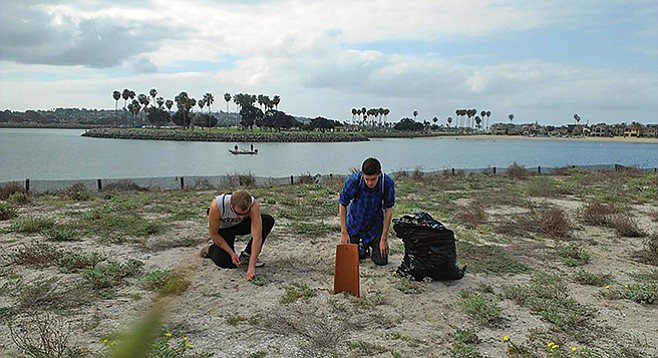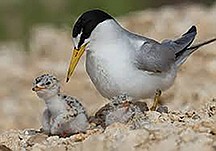 Facebook
Facebook
 X
X
 Instagram
Instagram
 TikTok
TikTok
 Youtube
Youtube

Unable to peer into the depths for millennia before sonar came along, fishermen found friends and helpers where they could. Diving pelicans tell them there is bait. Working seagulls tell them the bait is being pushed up by something bigger below. Cormorants don’t generally hang around where there is not something going on. Terns follow the big gamefish such as yellowtail and barracuda that are cruising just under the surface. This is something I’ve learned over time; a tern flitting in the sky erratically is a good sign. Watch until the bird gets close to the water and sometimes a boil will explode just beneath it as tern, bait, and large fish all come together in the dance of life and death. The fish usually wins, the bait gets eaten, and the tern hunts on. I like terns.

The smallest of all terns, the California least tern, is an endangered species. The development of their normal nesting grounds along the coast had nearly wiped them out by 1970 when they were put on the federal endangered species list. California listed them in 1971 and since then they have made a comeback.
Usually beginning in late April, the terns nest on beaches, mudflats, and sand dunes near shallow estuaries with access to the open ocean. They roost on the ground, unprotected. Feral cats, rats, and birds of prey are a threat to the little tern and its young.
Annually, there is a large colony of terns at Stony Point on the west side of Fiesta Island. Saturday, February 28, from 9:30 a.m. to 12:30 p.m., the San Diego Audubon Society would like your help managing invasive plants to promote tern nesting and create space for native coastal dune plants before the arrival of the nesting terns this spring.
Info: [email protected], 858-273-7800 x106, or facebook.com/sdaudubon


Unable to peer into the depths for millennia before sonar came along, fishermen found friends and helpers where they could. Diving pelicans tell them there is bait. Working seagulls tell them the bait is being pushed up by something bigger below. Cormorants don’t generally hang around where there is not something going on. Terns follow the big gamefish such as yellowtail and barracuda that are cruising just under the surface. This is something I’ve learned over time; a tern flitting in the sky erratically is a good sign. Watch until the bird gets close to the water and sometimes a boil will explode just beneath it as tern, bait, and large fish all come together in the dance of life and death. The fish usually wins, the bait gets eaten, and the tern hunts on. I like terns.

The smallest of all terns, the California least tern, is an endangered species. The development of their normal nesting grounds along the coast had nearly wiped them out by 1970 when they were put on the federal endangered species list. California listed them in 1971 and since then they have made a comeback.
Usually beginning in late April, the terns nest on beaches, mudflats, and sand dunes near shallow estuaries with access to the open ocean. They roost on the ground, unprotected. Feral cats, rats, and birds of prey are a threat to the little tern and its young.
Annually, there is a large colony of terns at Stony Point on the west side of Fiesta Island. Saturday, February 28, from 9:30 a.m. to 12:30 p.m., the San Diego Audubon Society would like your help managing invasive plants to promote tern nesting and create space for native coastal dune plants before the arrival of the nesting terns this spring.
Info: [email protected], 858-273-7800 x106, or facebook.com/sdaudubon
Comments